The Effects of Angle of Antenna Height
Radiation and Gain
The Vertical
We will first take the vertical antenna and look at its patterns. Figure Vertical-1 is the vertical radiation pattern of this antenna.
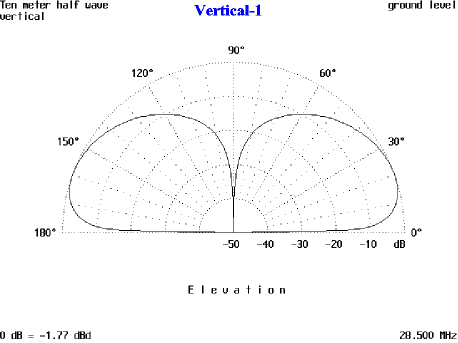
Figure Vertical-2 is the three-dimensional pattern of this antenna. This is a typical circular pattern of a vertical antenna and shows the deep null directly overhead.
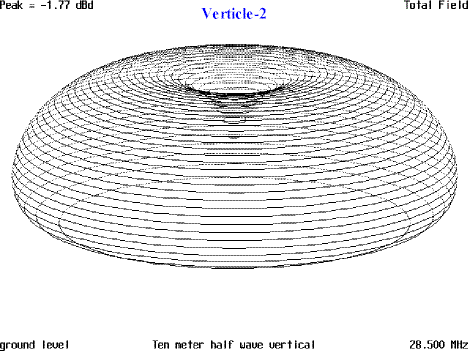
Sorry but the Graphs mentioned above were not backed up – MD0MDI.
The Dipole
The next antenna we will examine will be the 10 meter dipole. The diagram Figure Dipole-1, is of the antenna at 16 feet above ground, and the diagram Figure Dipole-2 is the vertical radiation pattern of this antenna.
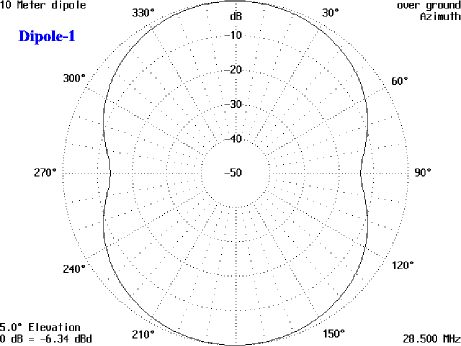
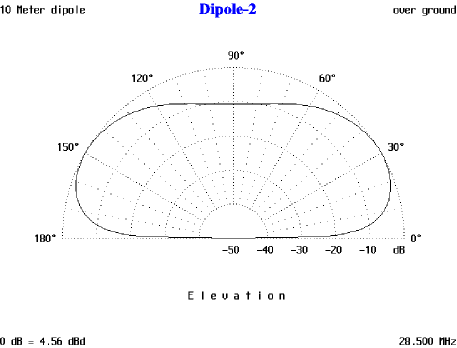
Again, Sorry No Graphs!
Graph-7 is a comparison of radiation angles of the dipole and the vertical antenna. It can be seen that the vertical antenna starts out with a much lower angle of radiation than the dipole. As height is increased, the angle of radiation of the dipole begins to catch up to the vertical antenna and at 112 feet, the radiation angle is the same. From this point, the angle of radiation of the two antennas is the same, varying only slightly until they reach the maxim height, 144 feet. At this height, the two antennas are only 1.55 dB apart. This is not a significant amount and under normal conditions on 10 meters, would barely be noticeable.
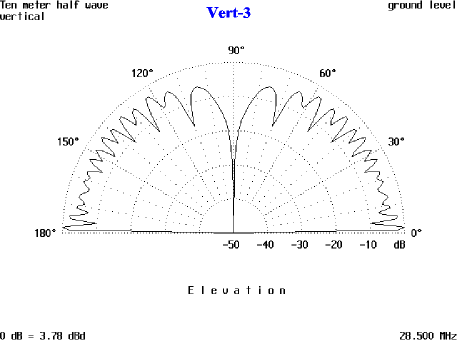
The conclusion to be reached is that height can make a difference in both radiation angle and gain. However, the change in height of the horizontal polarized antenna seems to make little difference in gain, but a fairly large amount of difference in radiation angle. The vertical antenna started out at zero gain, but caught up to the dipole rapidly. The vertical also started out having a much lower angle of radiation than the dipole. This is an advantage, even though it had less gain than the dipole at the lower altitude. The amount of difference in gain between the two antennas is not a significant amount. Therefore, it is easy to conclude that for a horizontal antenna such as a dipole, height has a minimal effect on gain. However, increasing height of the dipole has a far greater effect on radiation angle. The vertical antenna is a different story, as increases in heights appear to affect both radiation angle and gain more than more than the dipole.
So the effects of height does affect the performance of an antenna, but, how much depends on the type of antenna and its polarization. Keep in mind these antennas were analyzed under ideal conditions, clear of any surrounding conductors that could cause interference.
For those who are interested, the 10 meter band was used in our examples to keep the dimensions and heights within reason. Besides, with the sunspots heading towards a maximum, ten meters will really start to open more and more for DX contacts. Later on, there will be another article on the effects of height on the lower frequency antennas.
Originally posted on the AntennaX Online Magazine by Richard Morrow, K5CNF
Last Updated : 22nd April 2024
